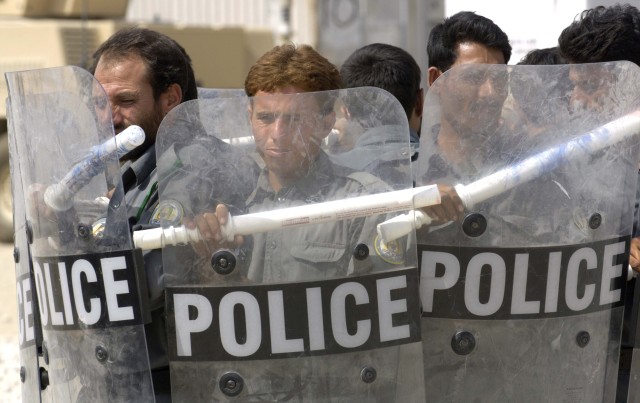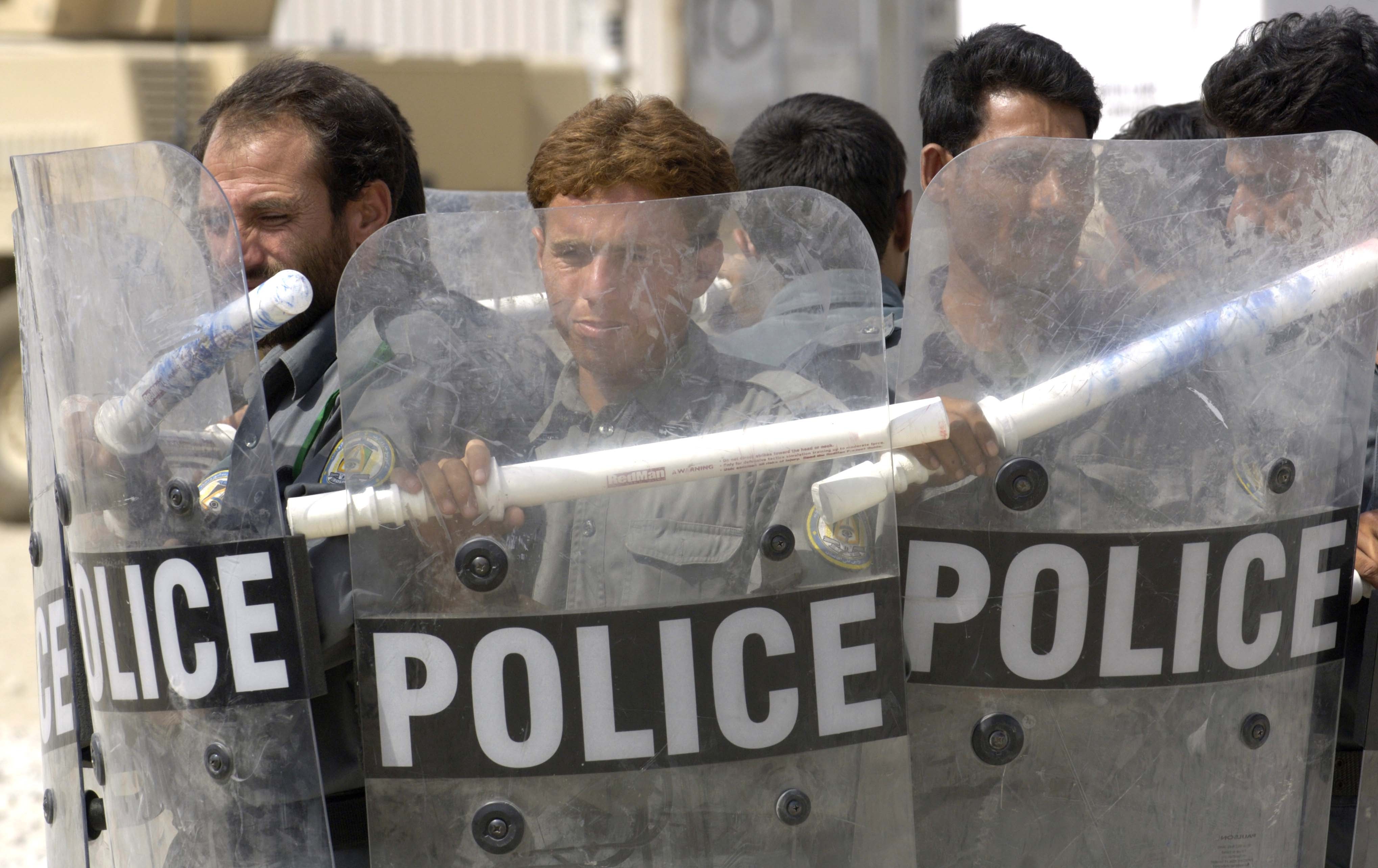WASHINGTON (AFPS, Nov. 13, 2007) - Ongoing training efforts, pay reforms and weeding out corrupt individuals have improved the image and performance of Afghanistan's police, a senior U.S. military officer said.
Today the Afghan police are being successful against the Taliban, Army Brig. Gen. Robert E. Livingston Jr., commander of Joint Task Force Phoenix VI, told Pentagon reporters from Afghanistan during a satellite-carried news conference Nov. 9.
Reports filed last year of police stations being overrun by Taliban terrorists is old news, said Brig. Gen. Livingston, a National Guard officer from South Carolina who has held his current command since May. His task force is responsible for training and equipping Afghan national security forces.
"Most district police centers resist the attacks, and the force is suffering far fewer losses," Brig. Gen. Livingston said. "The policemen are being paid on time, and they are developing great pride in their service."
Afghan army and police units have developed a spirit of partnership and camaraderie that was lacking in past years, Brig. Gen. Livingston reported. During a recent clearing operation in the southern part of Afghanistan, the police acted in concert with Afghan national army and coalition forces, he said.
"Just a few months ago, such cooperation was inconceivable," Brig. Gen. Livingston remarked. In the past, he said, Afghan soldiers and police would sometimes fight among themselves.
More than 57,000 Afghan police now are serving throughout the country, Brig. Gen. Livingston said. Plans are to increase the force to 82,000 policemen.
According to recent public polls, Afghanistan's police "are better respected than in the past," Brig. Gen. Livingston reported. In fact, he added, Afghan approval of their police is fast-catching up to the already high marks given to the country's army.
More police officers are being put on street duty, while pay reforms will narrow the difference between Afghan army wages and police pay, which had been lower, Brig. Gen. Livingston said.
"Although we still have a long way to go, we have seen an amazing transformation that is accelerating," Brig. Gen. Livingston said of the Afghan police's turn-around.
The Afghan army, now boasting 50,000-plus soldiers, is an effective fighting force that regularly deploys alongside U.S. and coalition forces during battles against the Taliban and other insurgents. Afghans rate their army as the most-respected institution in the country, he noted.
Afghanistan's soldiers are motivated and perform well at different levels, based on their experience, Brig. Gen. Livingston said. Many army units at various levels require scant mentoring from the coalition to accomplish their missions, he said. "Some Afghan army units will be standing on their own by next spring," Brig. Gen. Livingston predicted.
Training is now focused on improving staff coordination among the Afghan army's battalions, brigade and corps, the one-star general reported.
Brig. Gen. Livingston acknowledged that standing up an army while fighting an insurgency poses a challenge. Afghan army units require time to rest, train and refit after field operations against the enemy, he said.
Yet, the Afghan army continues to improve, Brig. Gen. Livingston said, noting its ranks are projected to reach 70,000 soldiers by the end of next year.
(Gerry J. Gilmore works for American Forces Press Service)


Social Sharing